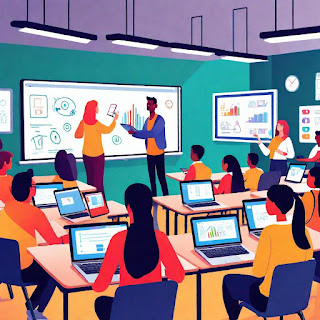The Transformation of Education: How E-Learning is Changing the Traditional Classroom
1. Introduction
E-learning has revolutionized the field of education, offering a plethora of opportunities for both educators and students. With the rise of digital learning platforms, the traditional classroom setting is undergoing a significant transformation. In this blog post, we will delve into the importance of e-learning, its advantages, challenges, and the impact it has on traditional teaching methods.
2. The Rise of E-Learning in Education
In recent years, e-learning has seen a surge in popularity, reshaping the way students learn and educators teach. With the convenience of accessing educational content online, learning has become more accessible than ever before.
3. Importance of Digital Learning Platforms
Digital learning platforms play a crucial role in providing a seamless experience for both educators and students. These platforms offer interactive and engaging content, making learning a more dynamic process.
4. Advantages and Challenges of Integrating E-Learning in Education
While e-learning brings numerous benefits, such as flexibility, personalized learning experiences, and cost-effectiveness, it also comes with its own set of challenges. Educators must navigate through these challenges to create a successful e-learning environment.
5. Benefits of E-Learning in Education
E-learning offers a wide range of benefits that contribute to a more efficient and effective learning experience.
6. Accessibility and Flexibility
One of the key benefits of e-learning is its accessibility and flexibility. Students can access educational content anytime, anywhere, allowing for a personalized learning experience that fits their individual needs.
7. Personalized Learning Experience
E-learning allows for a personalized learning experience, catering to the unique learning styles and preferences of each student. This individualized approach enhances the overall learning process and student engagement.
8. Cost-Effectiveness and Resource Efficiency
E-learning is a cost-effective solution for both educators and students. By eliminating the need for physical resources and reducing travel costs, e-learning helps save time and money while promoting resource efficiency.
Conclusion
In conclusion, e-learning is transforming the traditional classroom setting, offering a wealth of benefits for both educators and students. By embracing e-learning tools and technologies, educators can create a more engaging and interactive learning environment. The future of education lies in a hybrid model of learning that combines traditional teaching methods with the innovative aspects of e-learning.
Summary of Key Points :-
- E-learning offers accessibility, flexibility, and personalized learning experiences.
- The integration of e-learning changes the roles of educators and enhances collaboration and communication skills among students.
- E-learning tools and technologies, such as learning management systems and interactive multimedia content, play a crucial role in creating an effective online learning environment.
The Future of Education: A Hybrid Model of Learning
The future of education is a hybrid model of learning that combines the best aspects of traditional teaching methods with the innovative tools and technologies of e-learning. This model offers a dynamic and engaging learning experience for students of all ages.
FAQs:
1. How can educators ensure the quality of online education programs?
2. What are some strategies for maintaining student engagement in an online learning environment?
3. How can the digital divide be bridged to make e-learning accessible to all students?
Remember, the transformation of education through e-learning is an ongoing process that requires continuous adaptation and innovation. By embracing the opportunities that e-learning offers, educators can create a more engaging and effective learning environment for students around the world.


.jpeg)
.jpeg)
.jpeg)
.jpeg)

.jpeg)

Comments
Post a Comment